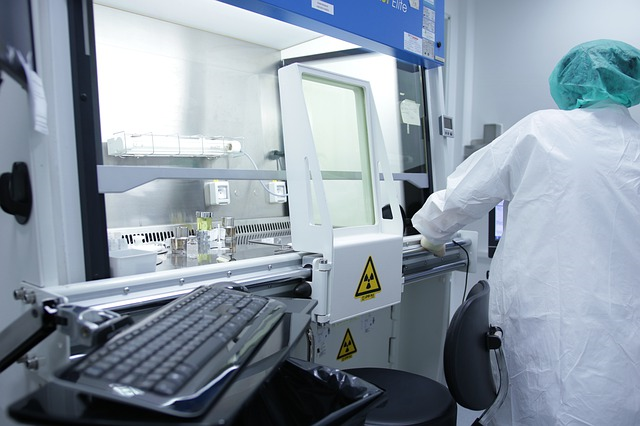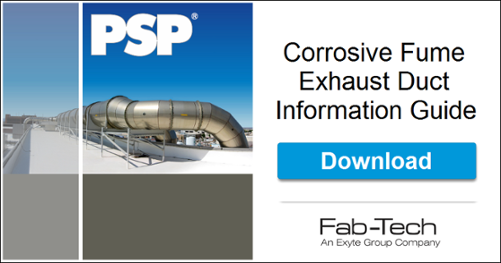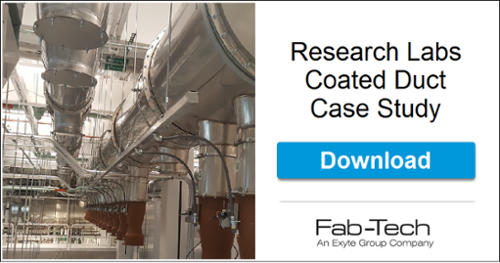Fume Hood Safety Protocols Should Be In Lockstep with a Safe Lab Design
/Lab%20fume%20hood%20experiment.png?width=263&name=Lab%20fume%20hood%20experiment.png) Fume hoods serve as the literal and figurative birthplace for next generation research and scientific discovery. Within these clean, confined spaces, our world is discovering new ways to improve the quality of life for all.
Fume hoods serve as the literal and figurative birthplace for next generation research and scientific discovery. Within these clean, confined spaces, our world is discovering new ways to improve the quality of life for all.
Thomas Edison was known to utilize his fireplace chimney as a fume vent. Without it, chances are his work would have ended prematurely.
These days, fume hoods are better ventilated, more chemically resistant, cleaner, and perform better than Edison’s fireplace, but they still require basic care and planning to ensure that lab safety is not compromised.
1) Combine with Corrosive Fume Vent Duct
Lab fume hoods are designed to contain and minimize exposure to hazardous airborne substances. They draw air away from lab work stations via built-in or remote blowers depending on the size and needs of the system.
For optimal safety against hazardous and highly corrosive vapors, ducted lab fume hood systems should be used to expel contaminated air completely from the facility, or to special filtration units like wet scrubbers via corrosive fume exhaust duct.
/MIT%20clean%20room%20PSP%20exhaust%20duct%20system.png?width=1328&height=747&name=MIT%20clean%20room%20PSP%20exhaust%20duct%20system.png) 2) Position Fume Hoods Wisely
2) Position Fume Hoods Wisely
In order for a lab fume hood to perform to its fullest potential, it's imperative that lab engineers, lab designs, and lab managers account for surrounding airflow variables that may negatively impact the efficiency of the system.
Tracer gas testing has shown that the presence of rogue drafts can interfere with the laminar flow of air entering a fume hood system. To minimize the potential for turbulence, it helps to be aware of common sources of competing air currents, and to plan accordingly when positioning or locating fume hoods in a lab design. Such considerations may include:
- Proximity to Traffic: The movement of a single person through a room can create columns of counter-rotating air at velocities up to 250 fpm behind the person. These air columns can be strong enough to overcome the face velocity of a fume hood system and may draw contaminated air into the surrounding environment. As such, hoods should be placed in low or no-traffic areas. Otherwise, passing by a hood should be avoided when the sash is open and when experiments are underway.
- Proximity to Supply Air Diffusers: Supply air diffusers are typically located on the ceiling to assist with broader airflow patterns within the lab space. Face velocities of these diffusers can reach 800 fpm. If the diffuser currents are unable to fade to 30-50% of the face velocity of nearby fume hoods, then the competing flow of air will cause turbulence around the hood opening. Moving the diffuser, using a different type, or rebalancing the air volumes between diffusers can mitigate this problem.
- Proximity to Windows and Doors: Open or drafty windows in a lab space can also be an unwanted source of interference with fume hood flows and containment. Similarly, as with high traffic areas, the presence and location of doorways should also be considered, since these will also contribute to turbulence.
- Orientation of the Face: If the face of the hood is oriented toward workstations, benches, viewing stations, computer monitors, or any place that personnel are frequently stationed, turbulence could be created and directed at the hood. Conversely, if something goes wrong in the fume hood, it is possible that debris or hazardous material could exceed the draw of the exhaust system and damage whatever is opposite the fume hood opening.
3) Record and Monitor Average Face Velocities
The rate at which air is drawn into the hood through the ‘face’ of the unit is known as the average face velocity. It is helpful to measure and monitor this rate in order to ensure that air is drawn at a careful, yet sufficient rate that will not be impaired by disruptive sources like those mentioned above.
To measure face velocity, air speed is recorded at multiple locations across the plane of the fume hood entrance. These individual point velocities are then averaged.

Once this value is known, exhaust blowers can then be adjusted accordingly until the measured average face velocity is within the desired range. Average face velocity should be measured and recorded for every fume hood unit, and used as a baseline for future fine tuning and maintenance.
Every lab space should define an acceptable average face velocity, minimum acceptable point velocity, and maximum standard deviation of velocities based on the processes occurring within that space.
4) Map Airflow and Test for Containment
After the average face velocity is established, it is important to test the containment ability of the fume hood for commissioning and/or compliance with ASHRAE/ANSI 110 standards. Testing containment can be done visually or quantitatively.
- To visually test for containment - harmless colored gas or smoke is released within the hood space and the hood's ability to contain and exhaust this gas can be observed once the hood is turned on.
- For a quantitative measurement - tracer gases are placed within the operating fume hood. After a set duration of time, the level and concentration of these tracer gases is measured both within the fume hood and the surrounding environment, producing a quantitative value of the fume hood's containment ability.
Based on the results of either test, modifications to the fume hood face velocity can be made if necessary.
In Summary
It should go without saying that lab fume hood safety and performance can be a key indicator of the safety and performance of your entire lab facility.
With so many variables to consider on the front end of the fume hood, like making sure average face velocities are properly balanced, containment is in check, and equipment is positioned in harmony with the layout of the lab, wouldn't it be nice to rest easy knowing that the fume hood exhaust is being safely and reliably carried away by the most capable fume exhaust duct system available?
If you would like more information about PSP® corrosive fume vent pipe and duct, please feel free to download our general information guide below:

OR
Read More About PermaShield Fluoropolymer Coated Fume Exhaust Duct Here
Sources:
- https://ehs.mit.edu/site/laboratory-safety/fume-hoodslaboratory-ventilation
- https://www.ncbi.nlm.nih.gov/books/NBK55867/
- http://www.labmanager.com/lab-health-and-safety/2016/10/laboratory-exhaust-systems-simplified#.WuEsH8gvzZt
- https://acsdchas.files.wordpress.com/2014/09/epa-performance-requirements-for-lab-fume-hoods_2-26-09-rev.pdf
